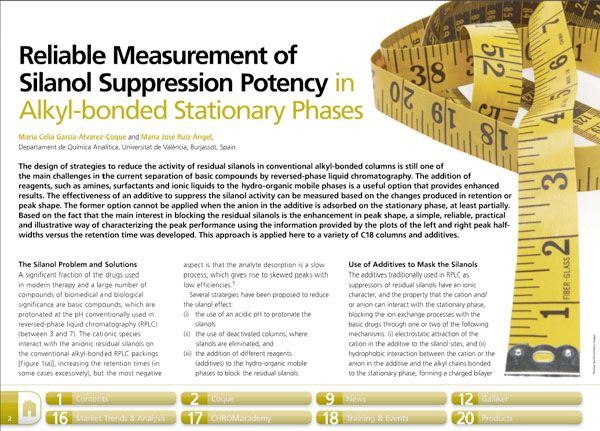Reliable Measurement of Silanol Suppression Potency in Alkyl-bonded Stationary Phases
The Column
The design of strategies to reduce the activity of residual silanols in conventional alkyl-bonded columns is still one of the main challenges in the current separation of basic compounds by reversed-phase liquid chromatography.
The design of strategies to reduce the activity of residual silanols in conventional alkyl-bonded columns is still one of the main challenges in the current separation of basic compounds by reversed-phase liquid chromatography. The addition of reagents, such as amines, surfactants and ionic liquids to the hydro-organic mobile phases is a useful option that provides enhanced results. The effectiveness of an additive to suppress the silanol activity can be measured based on the changes produced in retention or peak shape. The former option cannot be applied when the anion in the additive is adsorbed on the stationary phase, at least partially. Based on the fact that the main interest in blocking the residual silanols is the enhancement in peak shape, a simple, reliable, practical and illustrative way of characterizing the peak performance using the information provided by the plots of the left and right peak half-widths versus the retention time was developed. This approach is applied here to a variety of C18 columns and additives.


.png&w=3840&q=75)

.png&w=3840&q=75)



.png&w=3840&q=75)



.png&w=3840&q=75)









